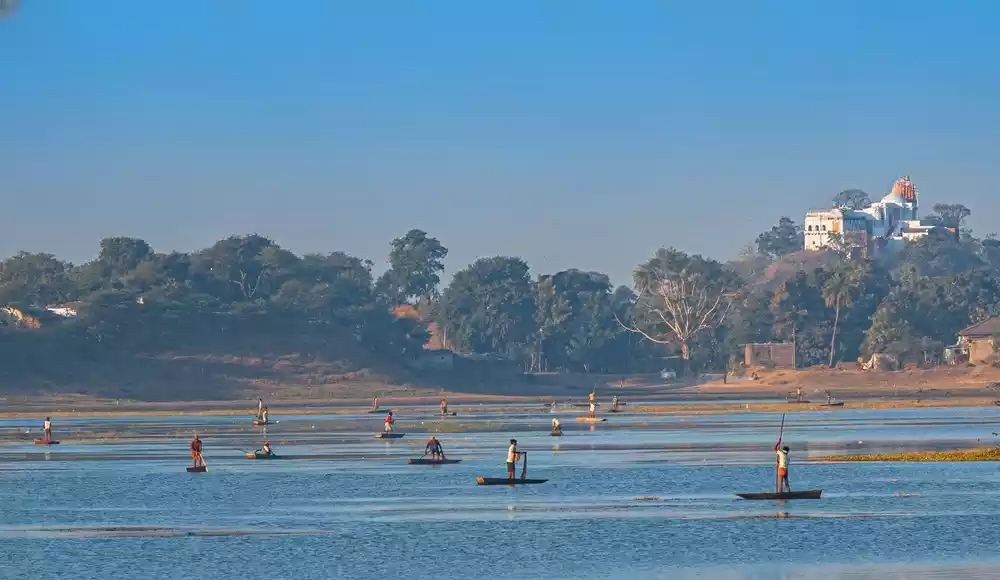District Palamu: A Comprehensive Guide
Introduction
Located in the heart of Jharkhand, Palamu District is a region rich in cultural heritage, diverse demographics, and stunning natural beauty. This article delves into the various aspects that make Palamu unique, from its vibrant culture and history to its geography and administrative structure.
Demography of Palamu
Palamu's population is a melting pot of different ethnicities and communities, predominantly comprising tribal groups such as the Oraon, Munda, and Chero. The district also includes significant populations of Yadavs, Kurmis, and Muslims. This diverse demographic landscape contributes to a rich cultural mosaic, with each community bringing its unique traditions, languages, and customs.
Population Statistics
- Total Population: Approximately 1.9 million
- Tribal Population: Around 40% of the total population
- Major Communities: Oraon, Munda, Chero, Yadav, Kurmi, Muslims
Cultural Heritage
Palamu's culture is characterized by its vibrant folk traditions, music, dance, and art forms. Festivals such as Diwali, Holi, Eid, and indigenous tribal festivals like Sarhul and Karma are celebrated with great fervor.
Traditional Arts and Crafts
- Dance Forms: Jhumar, Paika, and Chhau
- Music: Folk songs often accompanied by traditional instruments like Mandar and Nagara
- Crafts: Pottery, wood carving, and handloom weaving
Geography and Topography
Palamu District is situated on the Chota Nagpur Plateau, offering a varied topography that includes lush forests, rolling hills, and fertile plains. The region is rich in natural resources and biodiversity.
Major Rivers
- Koel River
- Auranga River
- North Koel River
Betla National Park
One of the key attractions in Palamu, Betla National Park, is known for its diverse flora and fauna, including elephants, tigers, and various bird species. The park also features picturesque waterfalls and dense forests, making it a haven for nature enthusiasts.
Cuisines of Palamu
The culinary traditions of Palamu are a delightful blend of flavors and techniques, influenced by its diverse population. The staple diet primarily includes rice, pulses, and vegetables, often accompanied by a variety of chutneys and pickles.
Popular Dishes
- Dhuska: Deep-fried rice flour cakes
- Litti-Chokha: Roasted wheat balls with mashed vegetables
- Handia: A traditional rice beer
- Mahua: A local alcoholic beverage made from the Mahua flower
Historical Overview
Palamu has a rich historical tapestry, with evidence of human habitation dating back to ancient times. The district has seen the rule of various dynasties, including the Nagas, Mauryas, and Guptas.
Significant Historical Periods
- Ancient Era: Early settlements and the rise of local kingdoms
- Medieval Period: Rule of the Chero and Nagvanshi dynasties
- Colonial Era: Resistance against British rule, marked by several tribal uprisings
Prominent Poets and Authors
Palamu has been home to several notable literary figures who have contributed to its rich cultural legacy. One of the most distinguished is Pandit Raghunath Murmu, who invented the Ol Chiki script for the Santali language.
Literary Contributions
- Pandit Raghunath Murmu: Creator of the Ol Chiki script
- Local Folk Literature: Includes poetry, folk tales, and social commentaries that reflect the district's cultural ethos
Administrative Structure
Palamu's administrative framework is well-organized, comprising various subdivisions, blocks, and villages. The district administration is led by a Deputy Commissioner, responsible for overseeing development projects and ensuring effective governance.
Administrative Divisions
- Subdivisions: Medininagar, Hussainabad, and Daltonganj
- Blocks: 21 blocks including Chainpur, Chhatarpur, and Patan
- Villages: Over 2000 villages, each with its local governance bodies
Development Initiatives
The district administration focuses on several development initiatives aimed at improving infrastructure, healthcare, education, and agriculture. Various schemes and programs are implemented to uplift the socio-economic status of the residents.
Key Development Projects
- Healthcare: Establishment of primary health centers and hospitals
- Education: Improvement of school infrastructure and literacy programs
- Agriculture: Introduction of modern farming techniques and irrigation projects
Conclusion
Palamu District is a region steeped in cultural heritage, historical significance, and natural beauty. Its diverse demography, rich traditions, and progressive administration make it a unique and fascinating area. As the district continues to develop, it remains deeply connected to its roots, ensuring a balanced blend of tradition and modernity.
